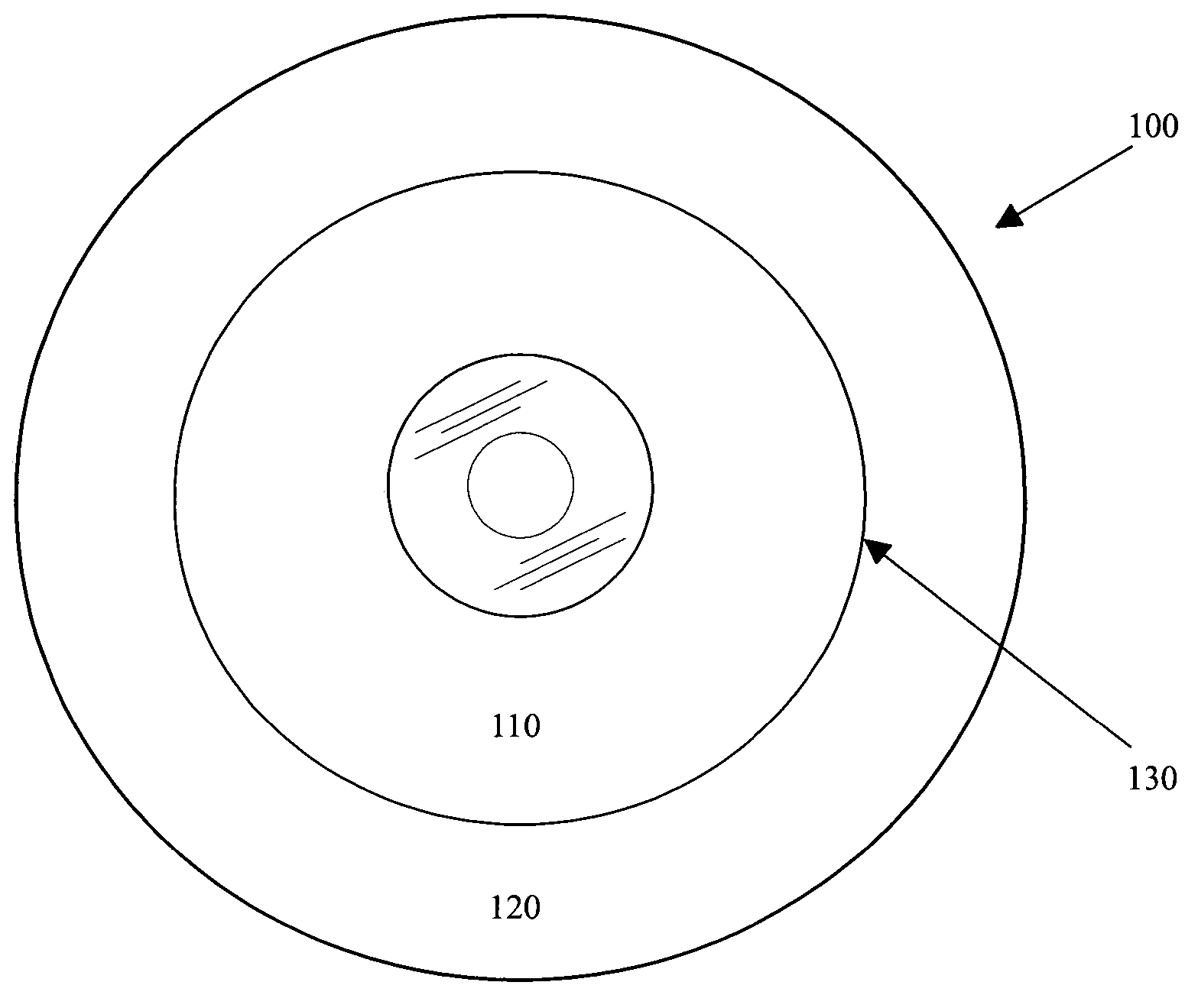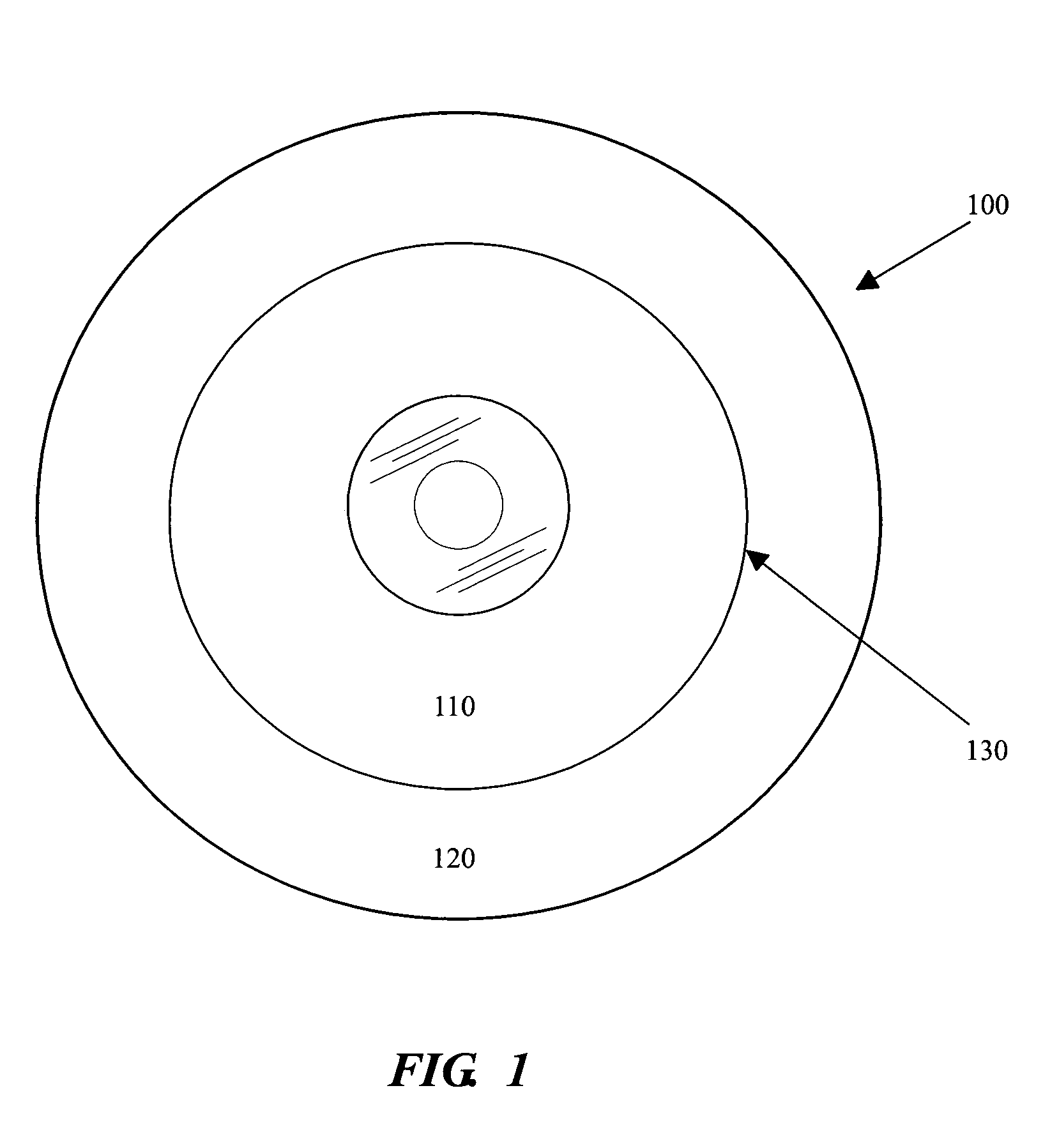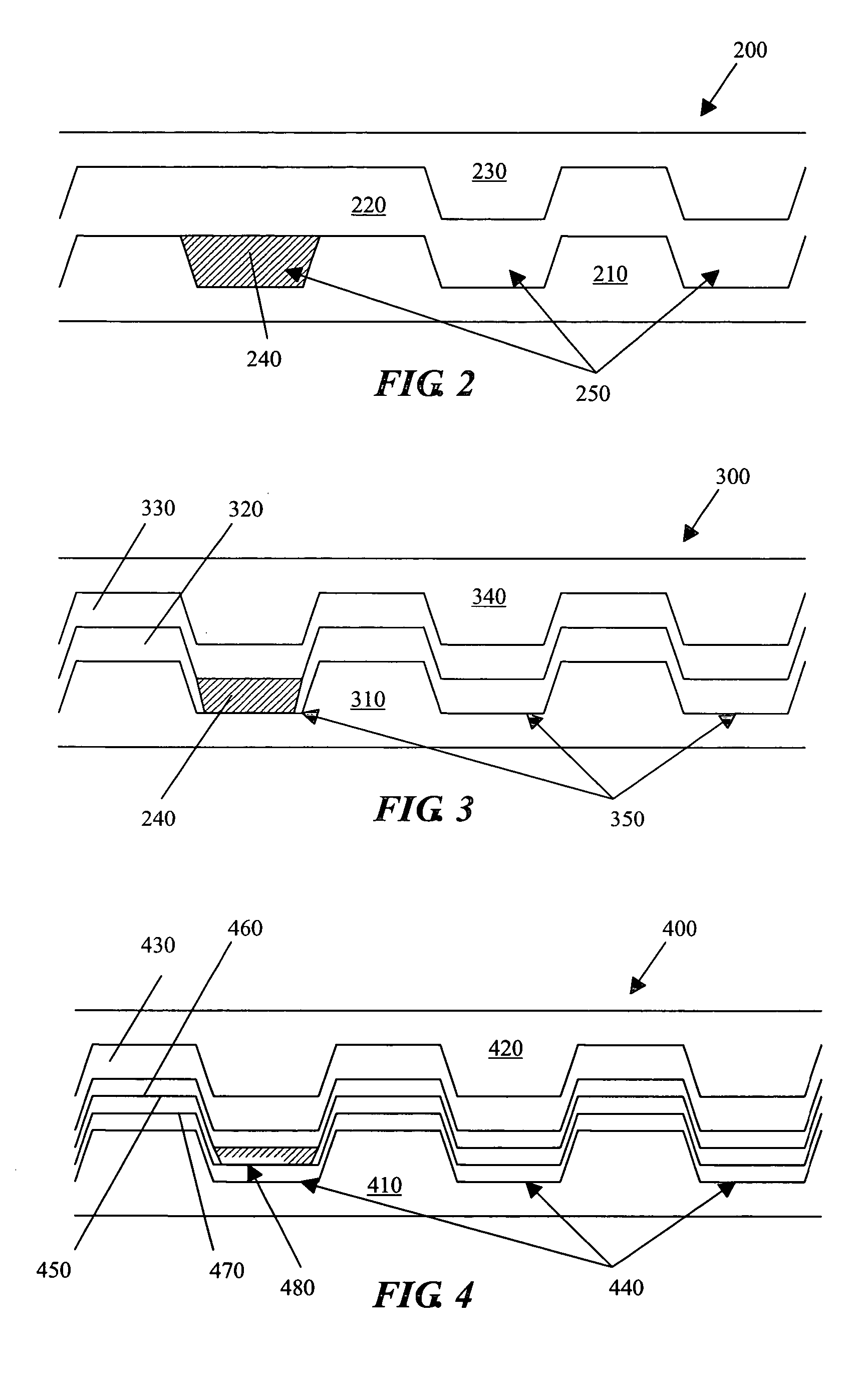Hybrid optical storage media and methods of use
a technology of optical storage media and hybrid storage media, which is applied in the field of hybrid storage media, can solve the problems of not being able to reach the average consumer user, not being able to use both writable optical drives and writeable optical media, and being more compact, so as to achieve the effect of facilitating the utilization of the entire storage capacity
- Summary
- Abstract
- Description
- Claims
- Application Information
AI Technical Summary
Benefits of technology
Problems solved by technology
Method used
Image
Examples
example 1
[0105] In a first example, an optical disk, such as a DVD style disk, includes both a restricted use data portion (e.g., read-only or write) and an unrestricted use data portion (e.g., read / write). A movie or other multimedia content is written to the restricted use data portion and advertising or other supplemental information is written to the unrestricted use data portion. A consumer buying or renting the movie can not tell a difference between this disk and other existing movie disks. At a later time, however, the advertising on the present disk can be replaced with new and current advertising.
[0106] New replacement advertising can be received, for example, by a movie rental business such as Blockbuster Video or Hollywood Video. They could then place their movie rental disks into a recording device that would overwrite the old advertisements with new advertisements received from an advertising source. In this manner, movies that are subsequently rented or purchased from the vid...
example 2
[0112] In the gaming industry it is common for a player to save instances of their game to the computer or console that is being used to play the game, particularly when the game requires a substantial amount of time to complete. Although this can be useful for enabling the player to return to a previous instance in the game, to take advantage of new information, for example, or to simply try again, this practice can also restrict the portability of the game. Accordingly, it can be difficult for the player to transport the saved game instances to another console or computer, where the player wishes to resume playing the game, such as, for example, at a friend's house.
[0113] Although certain techniques and devices have been developed that allow saved game instances to be stored on separate portable storage media, this practice can increase the overall cost and maintenance required to play the game, by requiring the user to purchase and keep track of the additional storage media.
[01...
example 3
[0116] Software updates that include such things as patches, drivers, executables, and other supplemental information, are often made available for software applications, including games, after the software has been purchased by a consumer or otherwise packaged for sale. These updates are typically desirable because they can enhance or otherwise improve the application. However, it can be difficult at times for a consumer to find and download the updates, particularly, when the updates are provided though an unreliable Internet or network connection.
[0117] The process of finding and downloading updates is even more problematic when the applications have to be reinstalled onto the consumer's computer, such as after a computer failure or when the consumer upgrades their computer. In particular, the consumer has to find the updates all over again and load them onto the computer.
[0118] The methods of the present invention can simplify this procedure, however, by enabling the consumer ...
PUM
 Login to View More
Login to View More Abstract
Description
Claims
Application Information
 Login to View More
Login to View More - R&D
- Intellectual Property
- Life Sciences
- Materials
- Tech Scout
- Unparalleled Data Quality
- Higher Quality Content
- 60% Fewer Hallucinations
Browse by: Latest US Patents, China's latest patents, Technical Efficacy Thesaurus, Application Domain, Technology Topic, Popular Technical Reports.
© 2025 PatSnap. All rights reserved.Legal|Privacy policy|Modern Slavery Act Transparency Statement|Sitemap|About US| Contact US: help@patsnap.com



